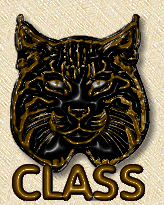Sphynx
Temperament:
*Mischievous
*Cuddly
*Loves to Purr
*Intelligent
*Very Affectionate
"This is a cat that must be protected from temperature extremes."
The gene responsible for the hairlessness is also responsible for the long, lean, angular
body build. It hairless nature also means that the body oils normally absorbed by a cat's
coat must be frequently shampooed or chamoised off a Spynx' skin. And because of its high
metabolism, the Sphynx has a huge appetite. The need for special care and breeding
problems have made the Sphynx relatively rare- but to its many fanciers any trouble is
worth it for the "cat so ugly it is beautiful". |
| Head: Almost wedge shaped; short nose; prominent cheekbones |
| Eyes: Medium size; lemon shaped |
| Ears: Very large, round tipped |
| Body: Medium size; long, lean, finely boned, muscular |
| Coat: Adult cats have fine down on face, ears, feet, and tail |
| Tail: Long, tapering |
| Patterns: Almost any color and pattern; nose pad, foot pads and eyes harmonize with coat |
Breed History: Virtually without any hair or even whiskers, the Sphynx is ugly to some,
interesting to others, controversial to many and attention grabbing to all. It has large
ears and smooth, hairless skin that feels like velvety moss. Its skin is curiously hot to
the touch (its body temperature is 4 degrees hotter than a normal cat) and some fanciers
fondly call it a "suede hot water bottle". But unlike hot water bottles,
Sphynxes are extremely affectionate and can make wonderful indoor pets.
Although hairless cats have been traced back to the Aztecs of Mexico, the Sphynxes origins
lie far north in Canada, where in 1966 a hairless mutant kitten was born to a
black-and-white pet cat. Her owner gave the new arrival the appropriate name Prune. A
breeding program was begun, and championship status was awarded by the International Cat
Association in the 1990's. |
| Additional Notes: |

|
|

|
|

|

|

|
|